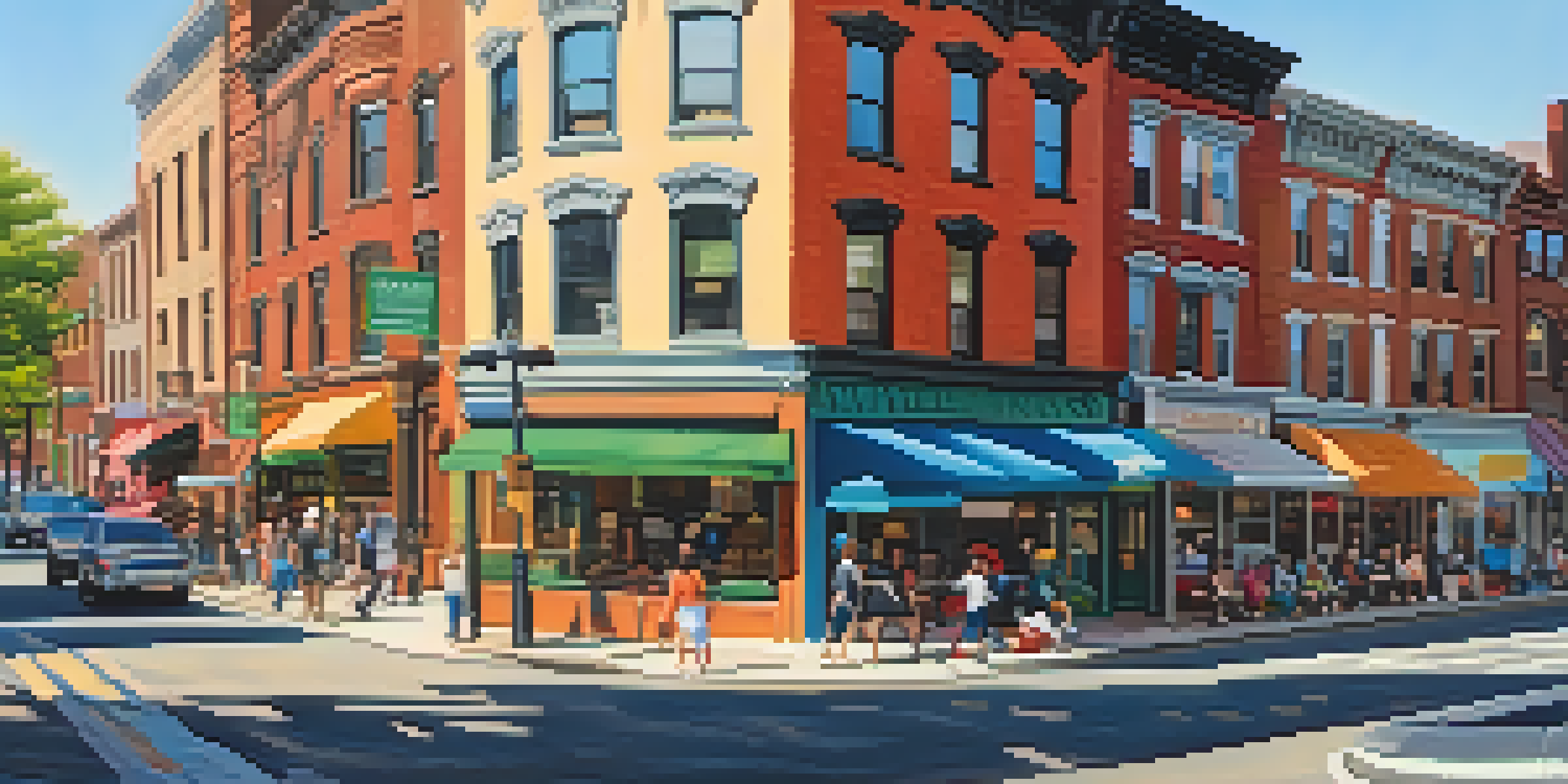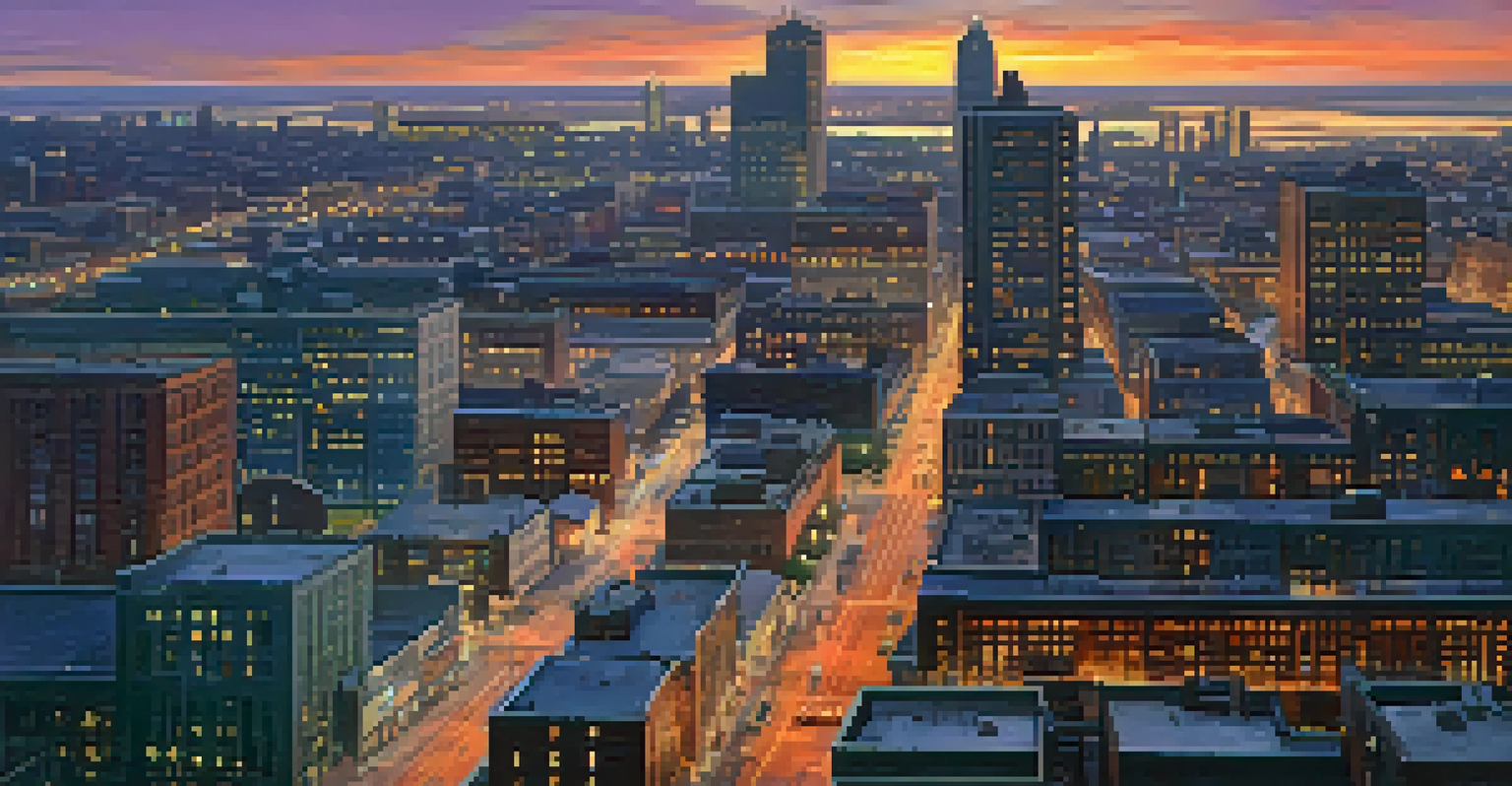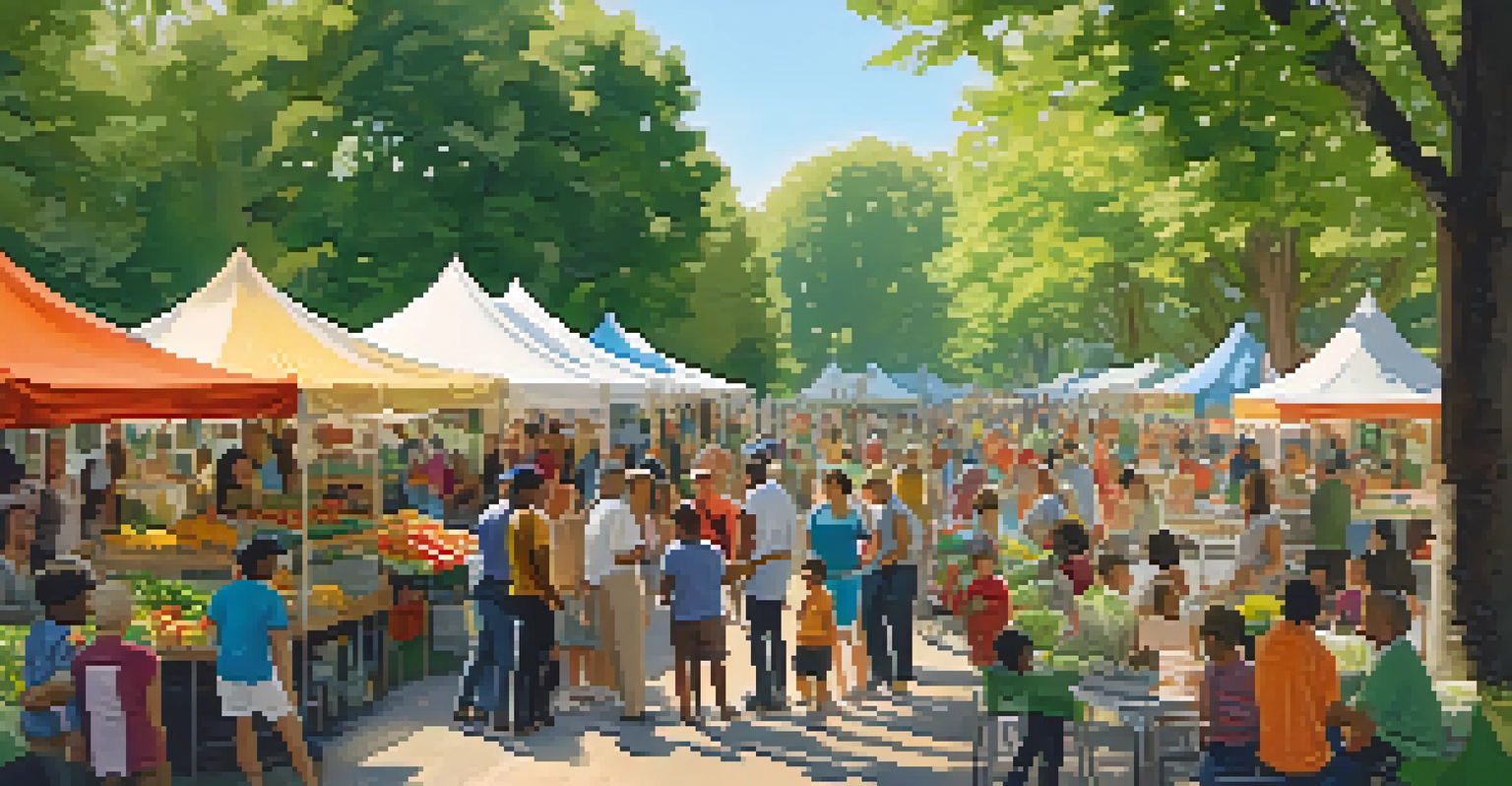Economic Growth vs. Displacement: Newark's Urban Dilemma

Understanding Newark's Economic Landscape
Newark, New Jersey, has undergone significant economic changes in recent years. Traditionally viewed as a struggling city, it has seen a resurgence in investment and development. This revitalization, often marked by new businesses and infrastructure projects, has generated hope for many residents. However, this growth brings with it complex challenges that can displace long-standing communities.
Gentrification is a double-edged sword. It can revitalize a community, but it can also displace the very people who have made that community vibrant.
The city's location, just a train ride away from New York City, makes it an attractive hub for businesses. As industries flock to Newark, they bring jobs and opportunities, which create a vibrant economic environment. Yet, this influx can also lead to skyrocketing property values, making housing unaffordable for many existing residents. It's a classic case of wanting progress but fearing the consequences.
As Newark continues to evolve, understanding the balance between growth and community preservation becomes crucial. The city's leaders must navigate these waters carefully to ensure that economic benefits do not come at the expense of the very people who have called Newark home for generations.
The Impact of Gentrification in Newark
Gentrification is a term that often surfaces in discussions about urban development, and Newark is no exception. It refers to the process where wealthier individuals move into a neighborhood, resulting in rising property values and rents. While this can lead to revitalized areas, it often pushes out lower-income residents who can no longer afford to live there.

In Newark, neighborhoods that were once affordable are seeing new coffee shops, upscale apartments, and trendy boutiques sprout up. For some, these changes signal progress and modernity, while for others, they represent a loss of community and cultural identity. This duality creates tension among residents as they grapple with their changing surroundings.
Newark's Economic Growth and Challenges
Newark is experiencing significant economic revitalization, but this progress poses risks of displacement for long-standing communities.
The challenge lies in finding ways to embrace economic growth without sacrificing the community fabric. Strategies like affordable housing initiatives and community involvement in planning can help mitigate the adverse effects of gentrification, ensuring that all Newark residents can benefit from the city's transformation.
Community Voices: Perspectives on Change
Listening to the voices of Newark's residents reveals a tapestry of opinions about the city's evolution. Some celebrate the new opportunities that come with economic growth, expressing optimism for the future. They see the investments as a chance to revitalize and uplift their neighborhoods, providing better services and amenities.
The true measure of a community is not how it treats its best members, but how it treats its worst ones.
Conversely, others voice concerns about losing their homes and the essence of their communities. Many fear that the influx of new residents will overshadow their cultural heritage and traditions. This disconnect highlights the need for inclusive dialogue, where all perspectives are considered in the decision-making process.
Community engagement is essential for fostering a sense of ownership and belonging. By involving residents in conversations about development, Newark can create a more equitable future where everyone feels valued and included in the city's growth story.
Economic Opportunities vs. Community Stability
The pursuit of economic opportunities often clashes with the need for community stability. As businesses move in and job opportunities expand, the risk of displacement looms large for many Newark residents. This creates an environment where the promise of progress can feel like a double-edged sword.
Local leaders and stakeholders must recognize that economic development should not come at the cost of community integrity. Initiatives that prioritize local hiring and support small businesses can help bridge this gap, ensuring that the benefits of growth reach the very residents who have contributed to Newark's resilience.
Gentrification's Dual Impact
While gentrification brings modern amenities and investments, it often leads to the loss of affordable housing and cultural identity for existing residents.
Ultimately, the goal should be to foster a thriving economy that uplifts all community members. By creating policies that balance growth with the preservation of local culture, Newark can emerge as a model for other cities facing similar dilemmas.
The Role of Policy in Urban Development
Effective policy-making plays a pivotal role in shaping the course of urban development in Newark. Local government and policymakers have the responsibility to create frameworks that promote equitable growth while safeguarding community interests. This involves zoning laws, tax incentives, and affordable housing regulations that reflect the needs of all residents.
For instance, implementing rent control measures can help keep housing affordable for existing residents amidst rising real estate prices. Additionally, policies that support local businesses can ensure that economic benefits circulate within the community, rather than flowing out to outside investors.
As Newark's landscape continues to change, the importance of proactive and inclusive policy cannot be overstated. By prioritizing measures that balance growth with community preservation, policymakers can help ensure that all Newark residents thrive in the face of change.
Case Studies: Success Stories and Cautionary Tales
Examining other cities that have faced similar growth and displacement challenges can provide valuable insights for Newark. For instance, cities like Portland, Oregon, have implemented successful affordable housing initiatives that have helped curb displacement while still encouraging growth. These case studies highlight the importance of tailored solutions that consider local contexts and resident needs.
Conversely, cities that have ignored the voices of their residents, such as San Francisco, serve as cautionary tales. Rapid development without adequate support for low-income residents led to significant displacement and cultural loss, ultimately sparking widespread protests and backlash. Newark can learn from these examples to avoid repeating past mistakes.
Collaboration for Inclusive Development
Engaging community stakeholders in planning and policy-making is essential for ensuring that Newark's growth benefits all residents.
By studying both successes and failures, Newark can develop a more informed approach to urban development. This includes engaging with experts, community leaders, and residents to create strategies that prioritize sustainable growth and community well-being.
The Path Forward: Collaborative Solutions for Newark
Looking ahead, collaboration among stakeholders is crucial for navigating Newark's urban dilemma. This means not only involving government officials but also local businesses, community organizations, and residents in the planning process. Creating a shared vision for Newark's future can foster a sense of unity and purpose among diverse groups.
Innovative solutions like community land trusts or cooperative housing models can empower residents and provide pathways to homeownership. These approaches encourage stability and help mitigate the risks associated with gentrification while promoting local investment and engagement.

Ultimately, Newark's path forward lies in embracing collaboration and creativity. By working together, the community can harness the benefits of economic growth while ensuring that no one is left behind, paving the way for a brighter, more inclusive future.